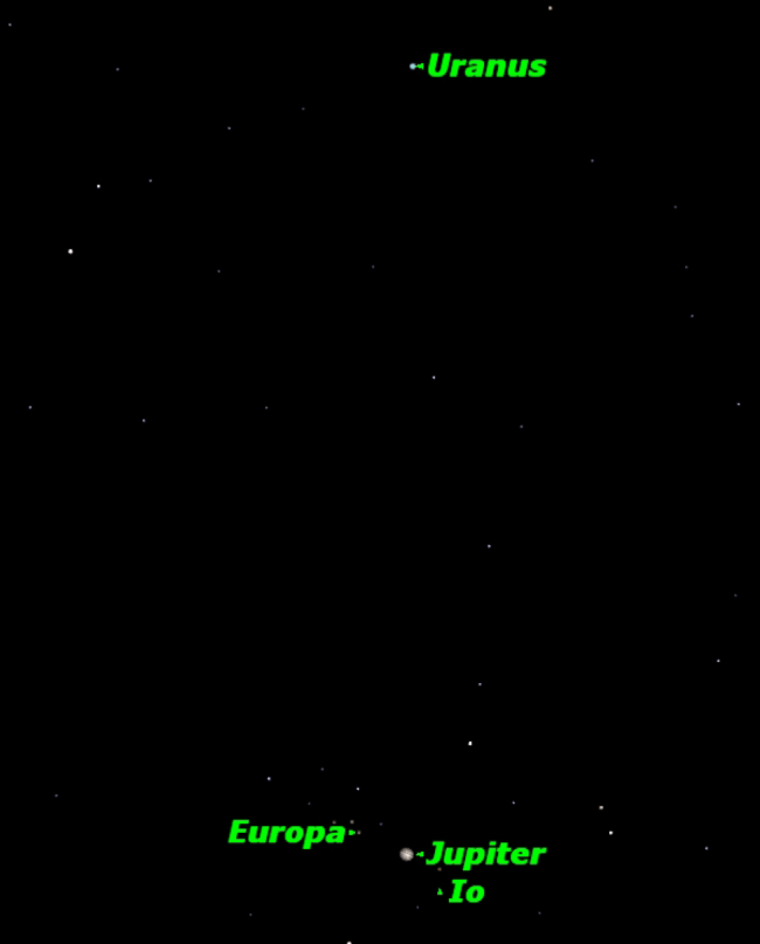This week, for the third time in eight months, Uranus will have a "close encounter" with Jupiter. Jupiter is currently the brightest object in the evening sky, being high in the south at sunset, and setting in the west around 11 p.m. ET.
As seen in a small telescope, Uranus will pass within half a degree north of Jupiter, giving an unusual opportunity to observe two "gas giant" planets in the same field of view. This juxtaposition will show just how different these two planets are in apparent size. Jupiter will measure 38 arc seconds in diameter, more than ten times the size of Uranus, 3.5 arc seconds.
Uranus in turn will dwarf Jupiter's four brightest moons, ranging in size from tiny Europa (0.84 arc seconds) to Ganymede (1.4 arc seconds). [ Diagram of the Jupiter-Uranus close encounter ]
Angular distances in the sky are measured in degrees, arc minutes and arc seconds. There are 360 degrees in a circle, 60 arc minutes in a degree, and 60 arc seconds in an arc minute. The Big Dipper measures 25 degrees across, and the sun and moon are both half a degree (30 arc minutes) across. Thus, Jupiter is about 1/50 of the diameter of the moon, comparable in angular size to a medium-size lunar crater.
Despite their apparent proximity as seen from Earth, Uranus and Jupiter are separated by 15.21 astronomical units, an astronomical unit being the average distance from Earth to the sun, 93 million miles (150 million km).
This is the third time Jupiter has passed Uranus since June. How can this be? It is because we observe the movement of the planets from a platform, the planet Earth, which is also in motion. Because of these changing perspectives, the planets farther from the sun than Earth appear to describe loops against the background of the stars. These are called "retrograde loops," and were a source of difficulty to early astronomers who failed to realize that the sun was the true center of the solar system.
Jupiter's first encounter with Uranus was on June 8, when it passed within 26 arc minutes. Jupiter reversed its apparent direction of motion on July 24, and passed Uranus in the opposite direction on Sept. 18 at a distance of 48 arc minutes. Jupiter reversed its apparent direction again on Nov. 19, and will be passing Uranus again on Jan. 4 at a distance of 31 arc minutes.
Of course, the planets themselves cannot reverse directions, but always move in one direction at a steady speed. It is Earth's more rapid motion that makes the outer planets appear to halt, reverse, halt again, and then speed up.
- Sky Calendar: Observing Events for December 2010
- Gallery: Planets of the Solar System
- Telescopes for Beginners
This article was provided to SPACE.com by Starry Night Education, the leader in space science curriculum solutions.
